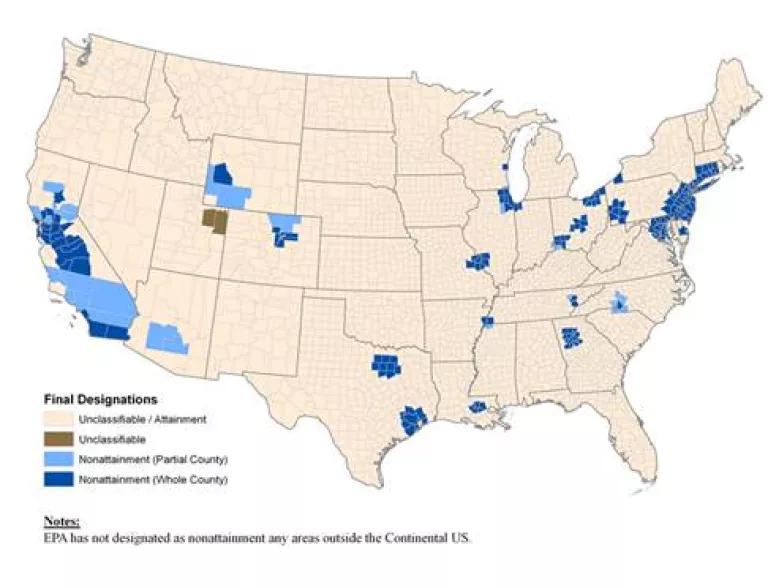
Congress included an innovative program in the 1991 Intermodal Surface Transportation Efficiency Act (ISTEA) that for over 20 years has helped clean up the environment by providing funds for transportation projects designed to reduce traffic congestion and improve air quality.
The Congestion Mitigation and Air Quality Improvement (CMAQ) funds are provided to states based on the population of local areas in “non-compliance” or those “seeking to maintain compliance” with strict national standards for ozone and carbon monoxide set up under the landmark Clean Air Act. In the first 10 years of the program the number of person days of unhealthy air quality declined by 38 percent nationally with California leading the pack for spending funds and accounting for 97 percent of that improvement.
But MAP-21 (Moving Ahead for Progress in the 21st Century), passed by Congress June 29th, included a number of provisions that put CMAQ funds in immediate jeopardy and could siphon as much as half of the program’s annual $3.3 billion funding away from regions facing public health threats due to air pollution by providing “flexibility” to states on how the money is spent.
Such implementation would eviscerate CMAQ as an important tool for preserving public health, diverting investments in projects that reduce pollution from tailpipes through technologies such as new rail cars and buses as well as diesel vehicle retrofit projects. CMAQ funds have gone towards improved public transit, traffic signalization and other traffic flow improvements, trip reduction and ride-sharing initiatives, and bicycle facilities.
Thankfully, federal and state highway administrations can stay the course towards cleaner air, and guidance from the U.S. Transportation Department can make sure we the public know what is happening with our tax dollars. In this spirit earlier this week the NRDC, along with seven other organizations, sent a letter to Transportation Secretary Ray LaHood urging him to implement the law to maximize CMAQ’s effectiveness and to direct his staff to ensure states continue to use CMAQ for projects that actually clean the air and improve public health for the sake of our communities and environment. We recommended that:
- State highway agencies be required to hold a 30-day comment period before diverting funding from regions with significant air pollution since accountability and transparency is the least taxpayers deserve in exchange for the additional latitude the new law provides; and
- FHWA issue a special rule allowing substantial flexibility in determining what sources localities and states can use to provide the newly required local match. Under the 2007 Energy Independence and Security Act, CMAQ funds did not need to be matched.
When the EPA established new ground-level ozone standards in 2008 they mapped areas that have met or not met (attainment vs. nonattainment) the standards. The map is splattered with nonattainment areas from coast-to-coast, putting millions of Americans, especially those in major metropolitan areas, at risk from breathing air that contains ozone, a component of smog pollution that can trigger a variety of respiratory-related health problems, and is especially dangerous to people with lung disease, asthmatics, children, older adults and people who are active outdoors.
Ground-level ozone also damages vegetation and ecosystems, leads to reduced agricultural crop and commercial forest yields, reduced growth and survivability of tree seedlings, and increased susceptibility to diseases, pests and other stresses such as harsh weather. The science is also clear that particulate matter or soot, especially fine particles, can cause severe health damage as well which explains a laudable change to CMAQ -- 25 percent of the money must be used to reduce such pollution in states challenged by it.
EPA’s Final Nonattainment Areas for the 2008 Ozone Standards
I urge lawmakers to continue putting every penny of available CMAQ funds into improving our air quality, the original intent of the program. Those of us who breathe air can't afford the environmental or health-related consequences of not doing so.



